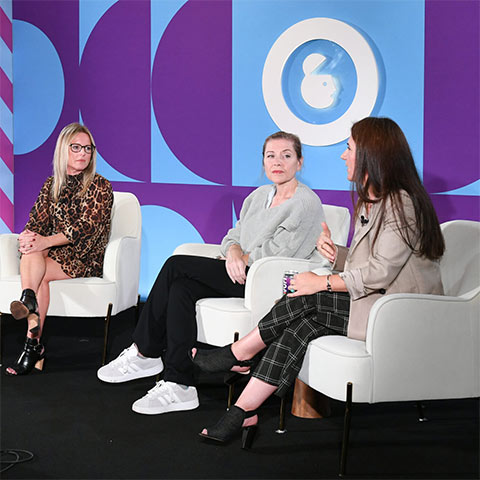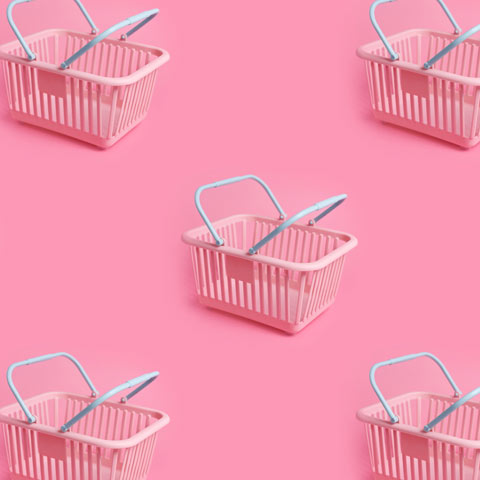Secure the Value of your Database - 5 Tips


Monday 23rd March is a date that will go down in history: the UK was put into lockdown, non-essential retail stores were closed and all travel - unless absolutely necessary - was placed on hold for the next three weeks… Or so we thought.
For the past few months whilst consumers eagerly awaited government updates on when the places we would frequent could open again, it didn’t stop many of us spending online, in fact, 35% of all UK online purchases during lockdown were made via Amazon.
Garden and interior design projects, the sudden need for co-ordinating loungewear sets and treating yourself to anything and everything because, well, let’s face it - lockdown hit us all hard.
But for retailers, travel agents, restaurants, gyms, beauty salons…the past couple of weeks have promised a return to normal trading, but post-lockdown - what is normal trading?
Here are my 5 tips to help your brand navigate its way out of lockdown, maximise on your newly acquired customers and secure the value of your customer database
1. Do not neglect your historical transaction data
The likelihood a customer will make a second purchase from you after one purchase is 27%, this increases to 45% after 2 and 54% after 3. Your existing customers purchased from you for a reason, they either needed or wanted a product or service which you could and can still provide.
Purchase behaviour may have changed during the lockdown period, your brand may have experienced all-time highs or, unfortunately, suffered a downturn in sales. Benchmarks, therefore, may look a little differently post-lockdown as you look to either continue growing or re-activate past purchasers.
RFM analysis will segment which customers are more likely to purchase based on their recency, frequency, and monetary value post-lockdown. Prioritise your most recent purchasers and target with a repeat purchase campaign.
Less recent, but historically frequent customers may require a re-activation campaign to remind them of how great your brand is to encourage them to purchase.
Personalise content within campaigns based on previous products purchased to cross sell, up-sell and increase basket size.
2. Nurture your newly acquired, pandemic purchasers
How many brands have you purchased from for the first-time during lockdown? Consider how many newly acquired purchasers will now sit in your customer database for you to nurture and turn into a repeat, loyal customer.
What did they purchase? How many times have they re-visited your website since their purchase? What content or products have they engaged with? Knowing and understanding these three things can help personalise content within a new-purchaser nurture campaign.
For Travelodge, engaging their new bookers is more important now than ever. Their automated pre-stay campaign utilises booking data to include content such as live weather updates, nearest transport links, and hotel information which has recently been updated to include safety measures in place for their guests and staff.
Combining different types of customer data allows you to make recommendations and provide information based on what you know about your customers, enhancing their experience of your brand and making them more likely to continue to engage with and purchase from you in future.
3. Apply behavioural data to your personalisation strategy
During lockdown behaviours changed. In March we witnessed panic buying of ‘essential’ items, paint and garden tools were like gold dust by April, in May clothing, textile and footwear sales jumped by 25.2% from the previous month, and in June Naked Wines reported an 81% increase in revenue.
From these stats we can conclude a few things:
- The UK public have been getting dressed up and merry in their gardens
- What is classed as an essential item varies from household to household, person to person
- The ‘new normal’ presents brands with new data, new behaviours, and new purchase patterns to consider and apply to their future strategy
77% of consumers say that they have chosen, recommended, or paid more for a brand that provides a personalised service or experience. Personalisation is not new, marketers have been using varying levels of personalised content within their communications for a while. However, many forget to use behavioural data and focus only on person or at best, transaction data.
Although the lockdown shift to online may not have been a smooth transition for all brands, the wealth of behavioural data acquired over the past few months is - arguably - the most valuable data your brand now possesses.
Brands who apply these insights to their personalisation strategy moving forward will be more likely to continue to acquire, convert and retain customers, compared to those who do not.
4. Maintain good deliverability utilising engagement to manage frequency
“If you want better results, then forget about setting goals. Focus on your system instead.”
James Clear was not specifically referring to marketing strategy when he wrote his book, Atomic Habits, however the sentiment still applies. Do not be tempted to start sending to your entire email database to make up for lost time if you have been unable to trade ‘as normal’ over the past few months.
According to Validity, sender scores have remained average, but many marketers have fallen foul of the good practises they previously followed and have been hitting the spam traps.
To ensure you navigate your way to the inbox successfully think about applying SPF -
- Segmentation - using RFM and engagement metrics to determine who to target and when
- Personalisation - make it relevant, apply behavioural data to personalise content within your emails
- Frequency - avoid spam filters with consistent sending volumes and don’t over send to your less engaged segments
Applying these metrics has helped MandM Direct to be more efficient and effective by targeting their more engaged customers regularly and reducing the frequency to their less engaged.
For further tips on improving your deliverability, read RedEye’s Compliance and Deliverability Director’s blog.
5. Stand out in the inbox with engaging and interactive content
Whether you have been working from home, have been furloughed or home schooling the kids you may have noticed that brands have capitalised on having a more captive, online audience. Competition in the inbox is fierce, and there is no sign of this changing anytime soon.
Insight from Global Web Index recently found that 75% of respondents strongly or somewhat approved of brands providing entertaining content during the COVID-19 pandemic. I would strongly advise that you communicate what your brand is doing to keep staff and customers safe, but don’t forget to stay true to your brand identity and the reasons why your customers engage with and purchase from you.
Papa John’s use of interactive content allowed the playful nature of the brand to come to life and truly engage their customer base, improving their click through rate by 65.5% and their conversion rate from email by 7.83%.
If you have noticed a drop in email engagement consider your wider channel mix, such as SMS and push, to compliment your email communications and reach a wider audience who may be suffering from screen fatigue.
Where do we go from here?
My final piece of advice is for you, the reader looking to implement some of these tips. Your next step will be to assess your current performance which will allow you to prioritise what may be a quick win compared to a longer-term project.
Over the coming weeks there will undoubtedly be new challenges and priorities may need to shift, taking one step at a time is key to making lasting, measurable and impactful changes.
If you are currently facing some of the challenges outlined in this blog, we would love to be able to help. You can contact RedEye using our contact us form here.
Want more like this?
Want more like this?
Insight delivered to your inbox
Keep up to date with our free email. Hand picked whitepapers and posts from our blog, as well as exclusive videos and webinar invitations keep our Users one step ahead.
By clicking 'SIGN UP', you agree to our Terms of Use and Privacy Policy


By clicking 'SIGN UP', you agree to our Terms of Use and Privacy Policy
Other content you may be interested in
Categories
Categories

Want more like this?


Want more like this?
Insight delivered to your inbox
Keep up to date with our free email. Hand picked whitepapers and posts from our blog, as well as exclusive videos and webinar invitations keep our Users one step ahead.
By clicking 'SIGN UP', you agree to our Terms of Use and Privacy Policy







![[Research] Apps: The Secret Engine of Ecommerce Growth [Research] Apps: The Secret Engine of Ecommerce Growth](https://images.bizibl.com/sites/default/files/apps-and-web-similarweb-480.jpg)

